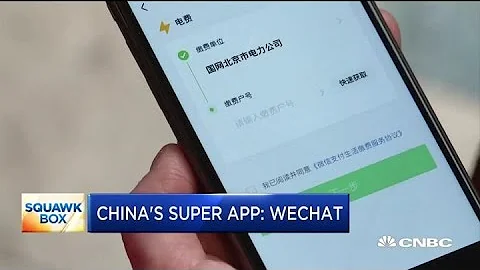![The column of the WeChat subscription account of the First Affiliated Hospital of Guangzhou University of Chinese Medicine [Bencao Station] is pushed every Saturday! Column articles are written by Chinese pharmacists from the hospital’s Department of Pharmacy. The content include - DayDayNews](https://cdn-dd.lujuba.top/img/loading.gif)
![The column of the WeChat subscription account of the First Affiliated Hospital of Guangzhou University of Chinese Medicine [Bencao Station] is pushed every Saturday! Column articles are written by Chinese pharmacists from the hospital’s Department of Pharmacy. The content include - DayDayNews](https://cdn-dd.lujuba.top/img/loading.gif)
WeChat subscription account of the First Affiliated Hospital of Guangzhou University of Chinese Medicine [Herbal Station] column, pushed every Saturday! The articles in the column are all written by Chinese pharmacist from the pharmacy department of the hospital. The content includes: Lingnan Materia Medica stories, introduction to the effects of commonly used materia medica, herbal diet, daily use of Chinese medicines and Chinese patent medicines, etc. It is practical and exciting! stay tuned!
Let you know the different "dehumidification holy medicine"
Pictures/Text/Hua Chengkun, pharmacist in charge of the Department of Pharmacy
Introduction: It has rained constantly in the south recently, and people are easily affected by moisture and can cause various discomforts, such as dizziness, vomiting, and diarrhea. etc. Traditional Chinese medicine has many methods to deal with these diseases, such as using aromatic herbs such as Patchouli and Peilan to dispel dampness, and Atractylodes and Caoguo to dry dampness and dispel cold. What I want to share today is not the dehumidification and dehumidification medicine that everyone is familiar with, but it seems that its existence is not felt at ordinary times, but it is indispensable in the clinical practice of traditional Chinese medicine and enjoys one of the "Holy Medicine for Dehumidification". Named - Alisma .
Regarding the name "Alismatis", "Compendium of Materia Medica" has this saying: "Removing the water means diarrhea, just like the diarrhea of Zeshui". The earliest extant herbal monograph "Shennong's Materia Medica" has an understanding of Alisma as "mainly responsible for wind-cold dampness, difficulty in breastfeeding, elimination of water, nourishing the five internal organs, replenishing qi and strength, fattening and health". This is also the later application of Alisma in traditional Chinese medicine. The cornerstone of disease treatment. During the Jin and Yuan Dynasties, Zhang Yueyu, the master of the Yishui School, highly praised Alisma. He said in "The Origin of Medical Medicine" that Alisma "is a holy medicine for dehumidification. It sinks and falls, and is yin. Its uses are Four: The first function is to enter the kidney meridian; the second function is to remove old water and nourish new water; the third function is to facilitate urination; the fourth function is to reduce swelling and sores. "Zhang Yueyou calls Alisma a "holy medicine for removing dampness", and its importance should be for promoting water. Among the Poria and Polyporus that have the function of infiltrating moisture, Alisma is the most praised for its ability to “remove old water and nourish new water”. "Lenuria and insufficient nourishment of yin", in layman's terms, means that it can selectively remove pathological water and nourish physiological water.
Alisma is so valued by doctors. Let’s take a look at what kind of traditional Chinese medicine Alisma is? Please see:
Alisma comes from the Alisma family plant Oriental Alisma or Alisma, which grows in water . In winter, when the stems and leaves begin to wither, the tubers are dug, washed, dried, and the fibrous roots and rough bark are removed. That is the Alisma medicinal material (Figure 1). Perhaps it is because of this growth environment that Alisma has the ability to "dehumidify". Alisma medicinal materials are soaked, cut into thick slices, and dried to obtain Alisma decoction pieces that can be used clinically (Figure 2). Alisma is sweet, light and cold in nature. Returns to the kidney and bladder meridians. It can induce water and dampness, relieve heat, resolve turbidity and reduce fat. It is used for diarrhea, oliguria, dizziness due to phlegm, hot stranguria and astringent pain, hyperlipidemia, etc. The general dosage is between 6~10g.
![The column of the WeChat subscription account of the First Affiliated Hospital of Guangzhou University of Chinese Medicine [Bencao Station] is pushed every Saturday! Column articles are written by Chinese pharmacists from the hospital’s Department of Pharmacy. The content include - DayDayNews](https://cdn-dd.lujuba.top/img/loading.gif)
Figure 1 Alisma medicinal materials
![The column of the WeChat subscription account of the First Affiliated Hospital of Guangzhou University of Chinese Medicine [Bencao Station] is pushed every Saturday! Column articles are written by Chinese pharmacists from the hospital’s Department of Pharmacy. The content include - DayDayNews](https://cdn-dd.lujuba.top/img/loading.gif)
Figure 2 Alisma decoction pieces
In Han Dynasty Zhang Zhongjing's "Treatise on Typhoid Febrile Diseases" gives a demonstration of the application of Alisma, such as Wuling Powder , which consists of Polyporus polyporus, Alisma purpurea and Poria cocos. , cinnamon twig, atractylodes, etc. This prescription is a representative prescription for the treatment of solar water retention syndrome. It is soothing on the outside and beneficial on the inside. The dosage of diuretic drugs Alisma, Polyporus and Poria adds up to 66 baht, which is the dosage of the entire prescription. 96 baht, nearly 70% of it. Therefore, this recipe mainly focuses on transforming qi and diuresis, and relieves symptoms and is supplemented. Here, the largest dosage of Alisma is 30 baht. It is the protagonist and is also mentioned in "Shen Nong's Materia Medica". The best footnote is that it "maintains wind, cold and dampness... and eliminates water".
Zhang Zhongjing's other classic "The Golden Chamber Synopsis " also records an easily overlooked but important prescription - Alisma Decoction. There are only two ingredients in this recipe: Alisma and Atractylodes. Although Zhongjing only mentions ten words about the application of this recipe: "If there is a drink in the heart, the person will suffer from pain and dizziness", but the word "bitter", It illustrates the seriousness of the condition, and also points out the effectiveness of this prescription. As long as the drink is overflowing, it is effective for dizziness caused by blocked orifices; such as Meniere's syndrome, cervical spondylosis , high blood pressure. For diseases such as blood pressure , etc., if you see symptoms of swelling after drinking water, you can use Alisma Decoction as appropriate.Liu Duzhou Alisma decoction is used to treat severe vertigo. Some people use Alisma decoction to treat postoperative hydrops after brain tumors, and both are effective.
![The column of the WeChat subscription account of the First Affiliated Hospital of Guangzhou University of Chinese Medicine [Bencao Station] is pushed every Saturday! Column articles are written by Chinese pharmacists from the hospital’s Department of Pharmacy. The content include - DayDayNews](https://cdn-dd.lujuba.top/img/loading.gif)
Figure 3 Composition of Alisma Decoction
It can be seen from the above that although Alisma is very effective in treating water-damp diseases, few citizens know much about it. , it is the medicinal character of Alisma. Research has also found that Alisma has the function of reducing turbidity and reducing lipids, and can be used to treat hypercholesterolemia, fatty liver , coronary heart disease and other diseases related to "phlegm, dampness, blood stasis and turbidity" in traditional Chinese medicine. In today's "three highs" "With the increasing number of cases, I believe it can benefit more patients.
Warm reminder: The related prescriptions mentioned above do not involve medication recommendations and should be used under the syndrome differentiation of traditional Chinese medicine practitioners.
About the author
![The column of the WeChat subscription account of the First Affiliated Hospital of Guangzhou University of Chinese Medicine [Bencao Station] is pushed every Saturday! Column articles are written by Chinese pharmacists from the hospital’s Department of Pharmacy. The content include - DayDayNews](https://cdn-dd.lujuba.top/img/loading.gif)
Name: Hua Chengkun
Department: Department of Pharmacy
Title: Supervising pharmacist
Address: The First Affiliated Hospital of Guangzhou University of Traditional Chinese Medicine, No. 16 Airport Road, Guangzhou
![The column of the WeChat subscription account of the First Affiliated Hospital of Guangzhou University of Chinese Medicine [Bencao Station] is pushed every Saturday! Column articles are written by Chinese pharmacists from the hospital’s Department of Pharmacy. The content include - DayDayNews](https://cdn-dd.lujuba.top/img/loading.gif)
Editor: Liu Qingjun
Review: Zheng Xiaoying, Yang Yan
Editor: Zhong Tiansong
![The column of the WeChat subscription account of the First Affiliated Hospital of Guangzhou University of Chinese Medicine [Bencao Station] is pushed every Saturday! Column articles are written by Chinese pharmacists from the hospital’s Department of Pharmacy. The content include - DayDayNews](https://cdn-dd.lujuba.top/img/loading.gif)
![The column of the WeChat subscription account of the First Affiliated Hospital of Guangzhou University of Chinese Medicine [Bencao Station] is pushed every Saturday! Column articles are written by Chinese pharmacists from the hospital’s Department of Pharmacy. The content include - DayDayNews](https://cdn-dd.lujuba.top/img/loading.gif)





















